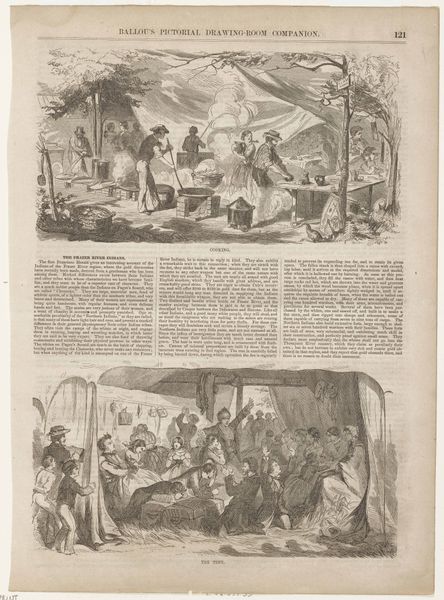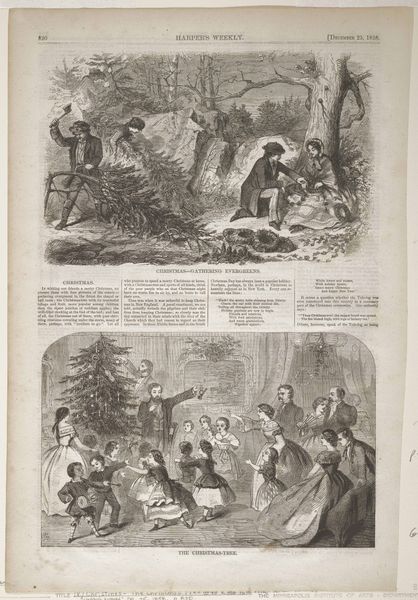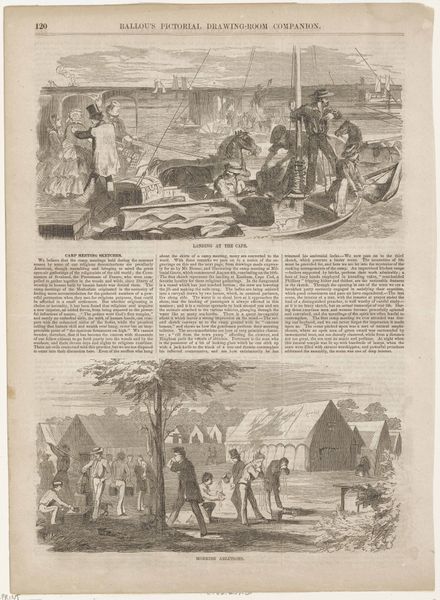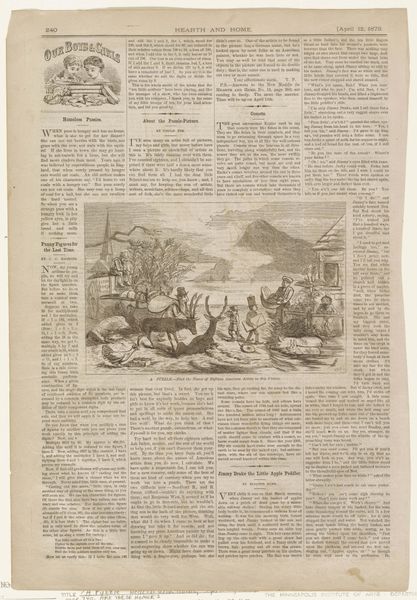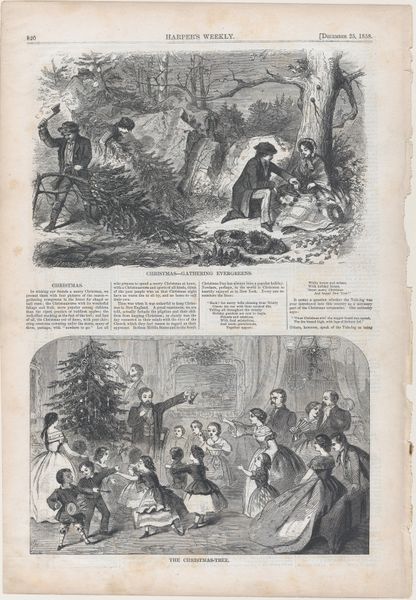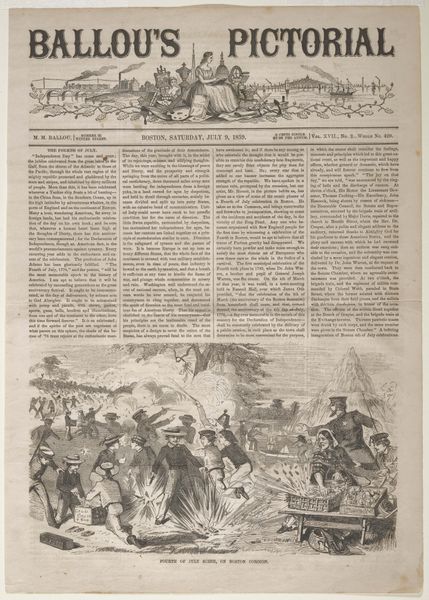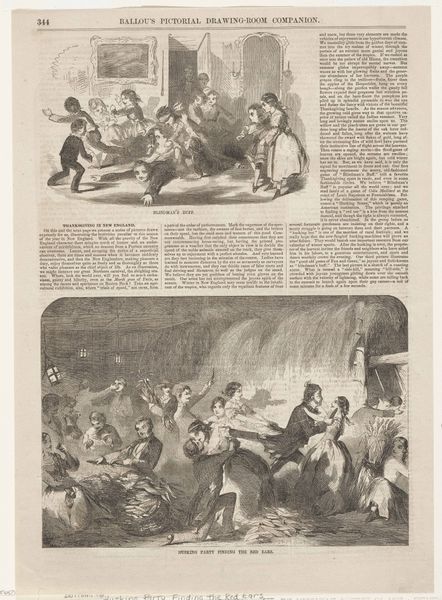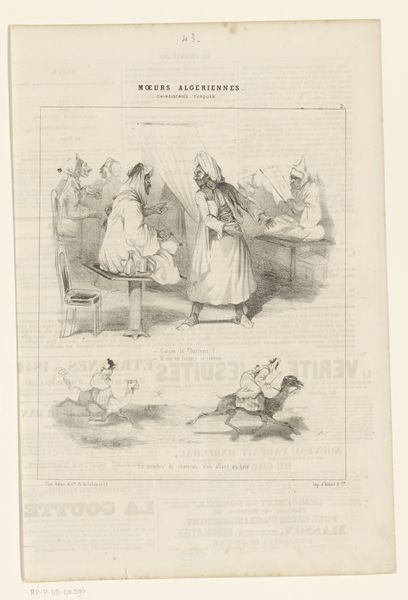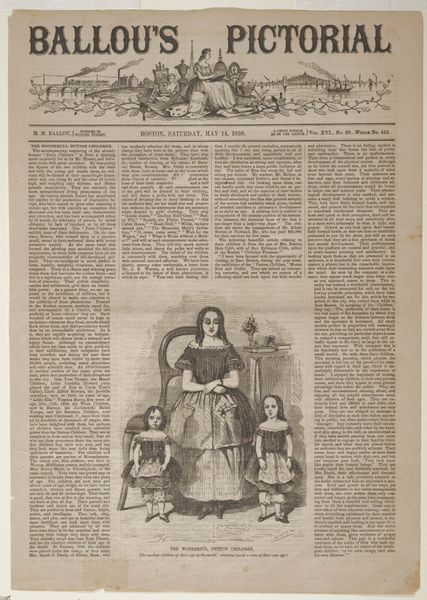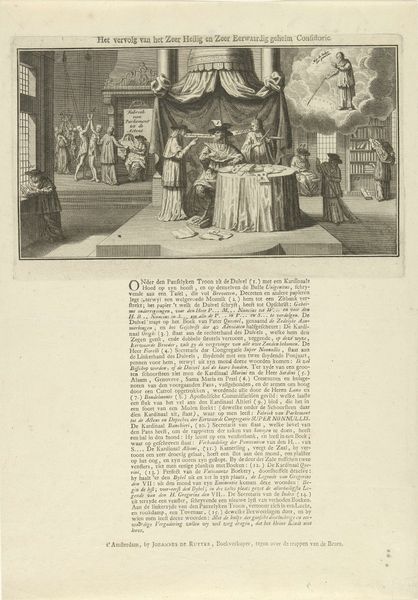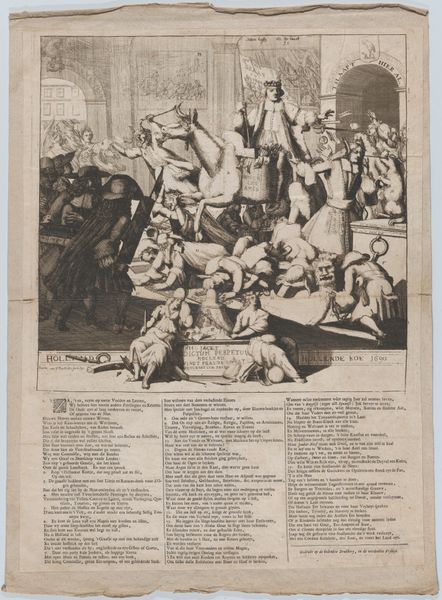
Dimensions: 4 7/16 x 7 in. (11.27 x 17.78 cm) (image)15 x 10 3/4 in. (38.1 x 27.31 cm) (sheet)
Copyright: Public Domain
Editor: We're looking at Winslow Homer’s "Coasting Out of Doors" from 1857, a wood engraving. It’s quite detailed, with an image of children playing outside on sleds while others party inside a house. There's such a sense of energy. What do you see in it? Curator: I see a fascinating snapshot of mid-19th century American life, revealing societal values. The presence of both an indoor party and outdoor winter activities signifies a society structured by class. What relationship do you see between the two sections, the indoor gathering and the children sledding? Editor: They appear as distinctly separate scenes, happening at different times and locations. The upper scene is refined, while the bottom is more natural. Curator: Exactly. Ballou’s Pictorial, where this print was published, catered to a broad audience and its popularity indicates that readers valued portrayals of both leisure activities among social classes. What social and political conditions made this possible? Editor: That's interesting. So, prints like this offer a kind of visual record, shaped by and shaping popular imagination about who people were at that time? How class was performed indoors, for example? Curator: Precisely. Homer’s artwork can be considered a reflection of broader social trends. Do you notice anything about who is in the picture, or who isn’t? Editor: It doesn’t look very diverse, actually. Is that typical? Curator: Absolutely. These images both reflect and contribute to creating a specific narrative about who belongs. Homer’s choices speak to a specific social group’s experience and implicitly exclude others. Understanding that context, what did you get out of looking closely? Editor: It reframes the fun scenes as having less to do with play and more about class distinctions. Curator: Indeed, it gives a new way to look at art!
Comments
No comments
Be the first to comment and join the conversation on the ultimate creative platform.

